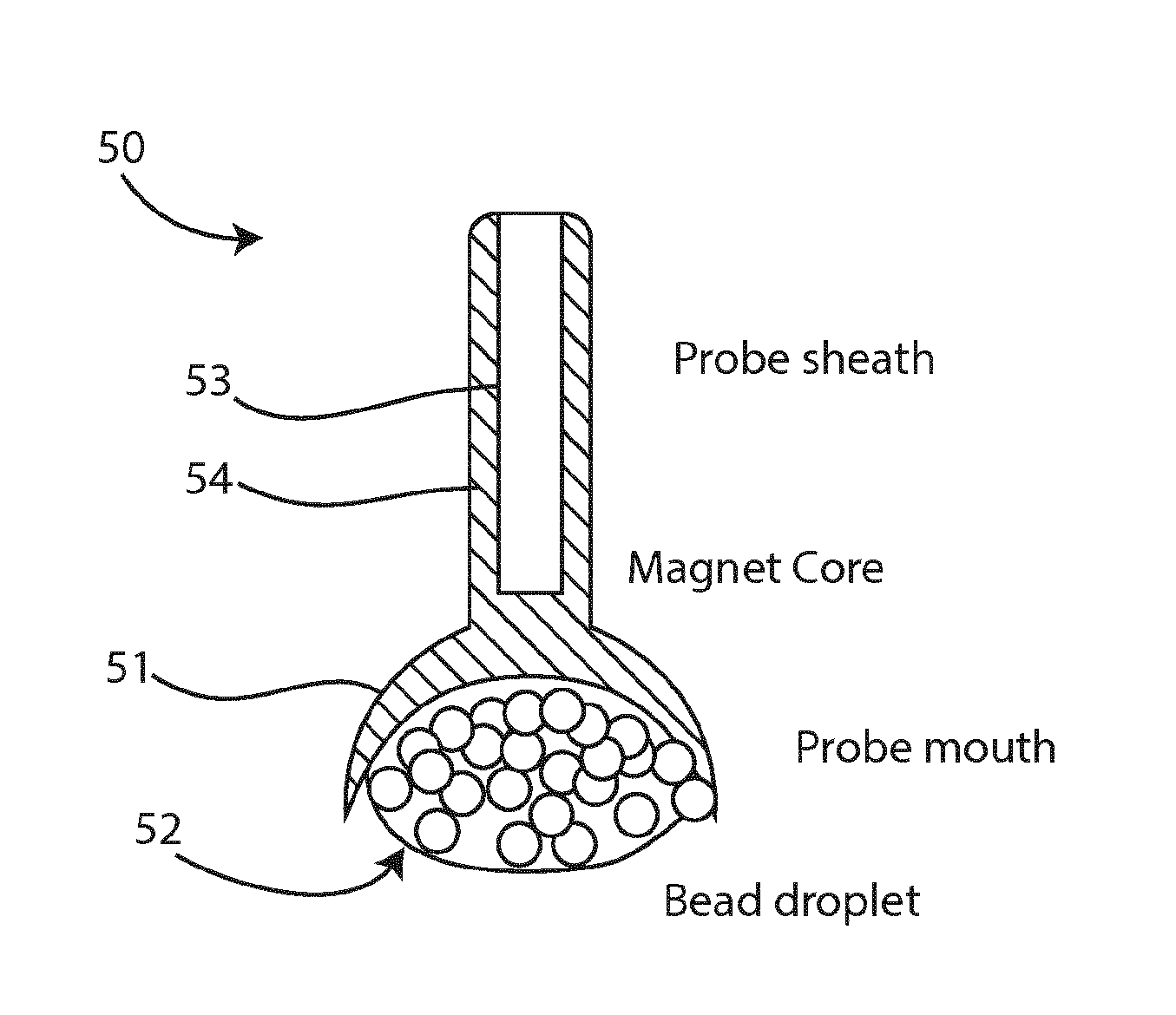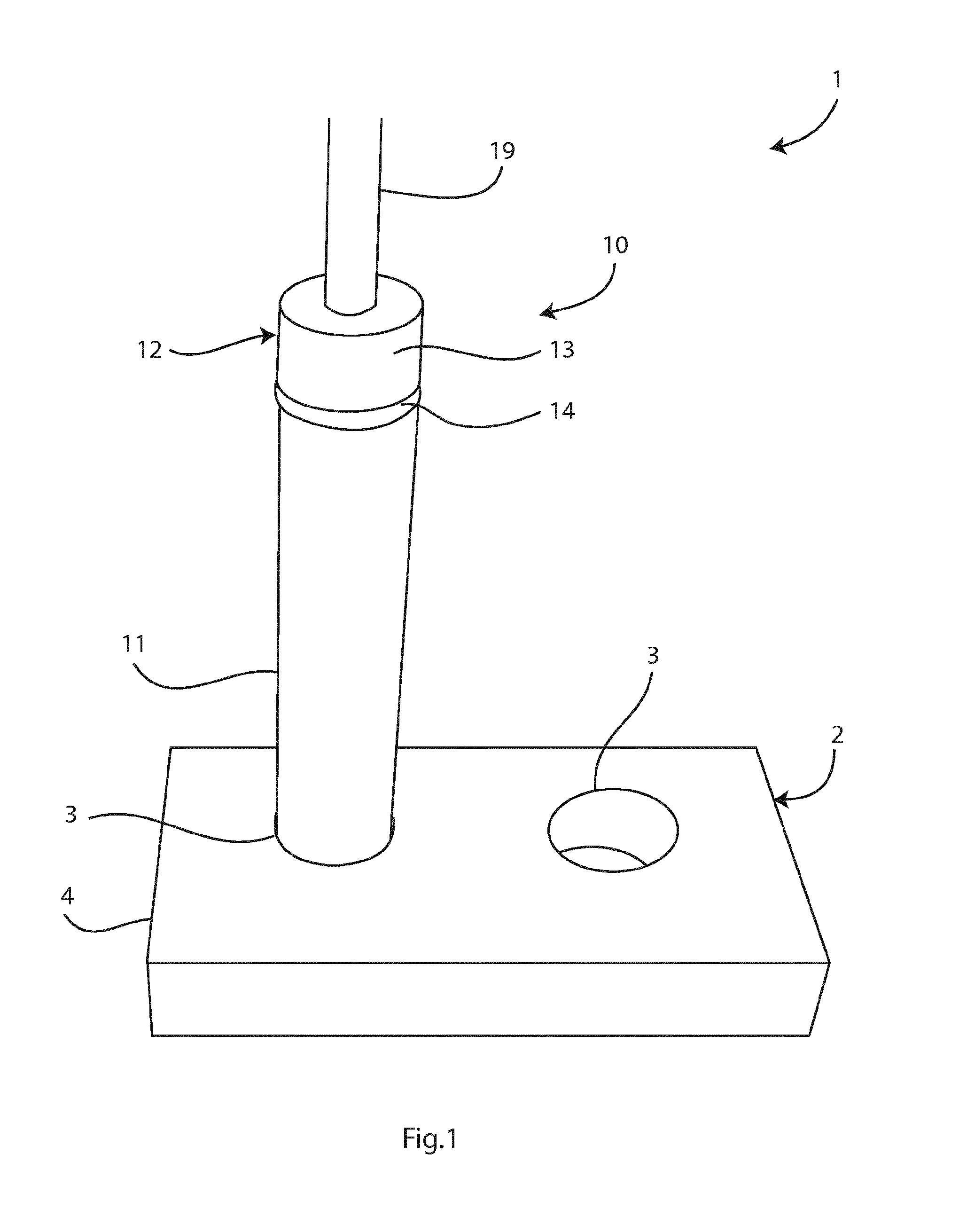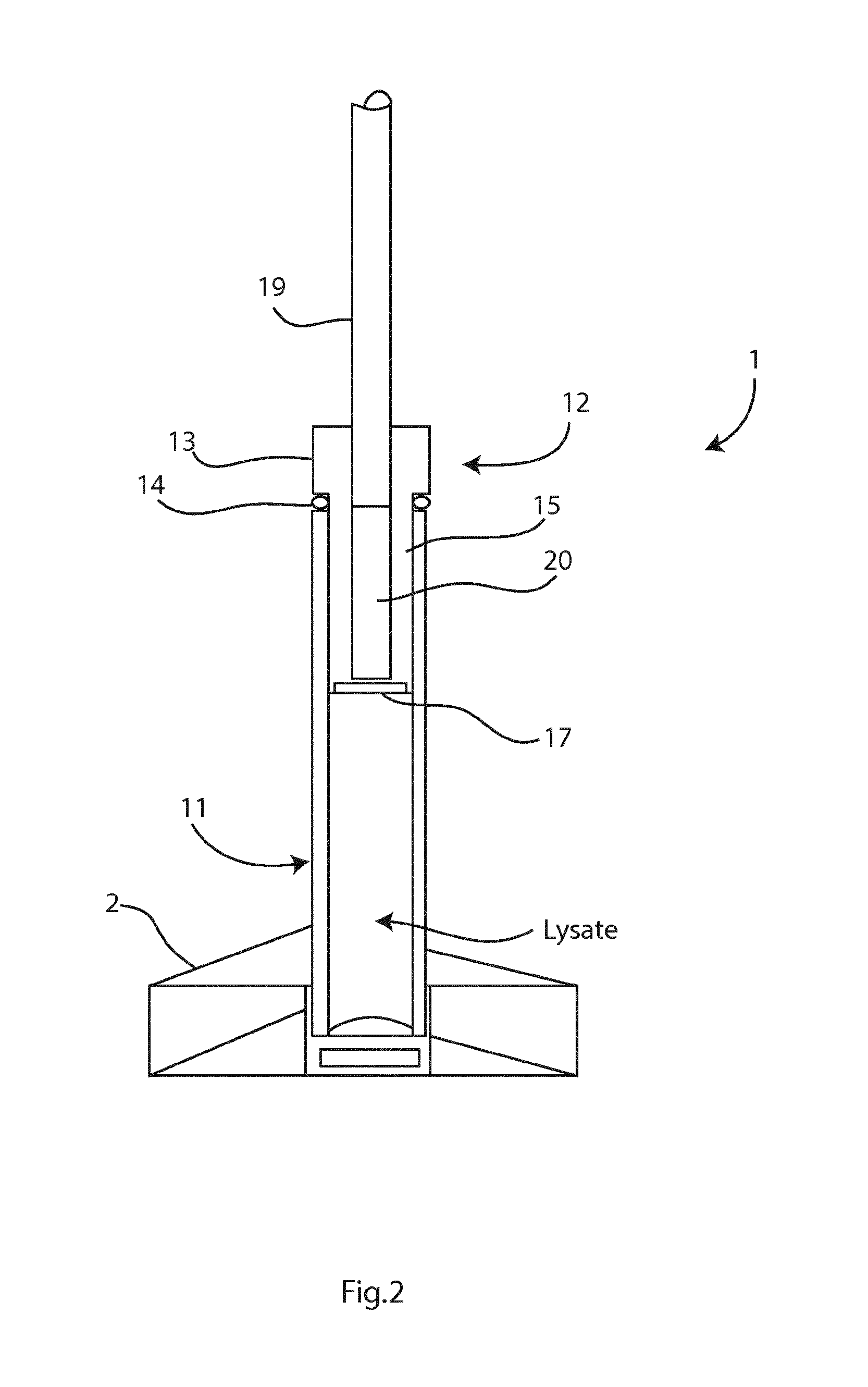A sample preparation method and apparatus
a sample preparation and sample technology, applied in the field of sample preparation, can solve the problems of high cost, high labor intensity, and complex sample lysis and whole nucleic extraction techniques, and achieve the effects of reducing labor intensity, reducing labor intensity, and increasing labor intensity
- Summary
- Abstract
- Description
- Claims
- Application Information
AI Technical Summary
Benefits of technology
Problems solved by technology
Method used
Image
Examples
Embodiment Construction
[0054]The invention in some embodiments employs peptide nucleic acids (PNAs) as probes. PNAs are synthetic polymers with a N-(2-aminoethyl)-glycine backbone linked by peptide bonds and purine and pyrimidine bases bonded by a methylene bridge (—CH2-) and a carbonyl group (—(C═O)—) allowing them to engage in Watson-Crick bonding with other PNAs and NAs. PNAs were developed originally as a type of drug which would target messenger RNA and affect gene expression but later have shown value in NA hybridisation procedures. PNAs are resistant to extremes of pH and degradation by nucleases. The specificity of PNA probe binding allows shorter probes to be used also, making them particularly useful for the binding of μRNAs. As they have no charge, they do not need the benefit of cation screening to allow them to engage in Watson-Crick binding with PNAs or NAs.
[0055]Chelex™ extraction results in low ionic content. When ionic concentration is low, binding of two complementary nucleic acid strand...
PUM
| Property | Measurement | Unit |
|---|---|---|
| size | aaaaa | aaaaa |
| temperature | aaaaa | aaaaa |
| temperature | aaaaa | aaaaa |
Abstract
Description
Claims
Application Information
 Login to View More
Login to View More - R&D
- Intellectual Property
- Life Sciences
- Materials
- Tech Scout
- Unparalleled Data Quality
- Higher Quality Content
- 60% Fewer Hallucinations
Browse by: Latest US Patents, China's latest patents, Technical Efficacy Thesaurus, Application Domain, Technology Topic, Popular Technical Reports.
© 2025 PatSnap. All rights reserved.Legal|Privacy policy|Modern Slavery Act Transparency Statement|Sitemap|About US| Contact US: help@patsnap.com



